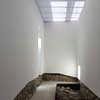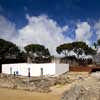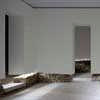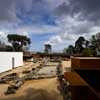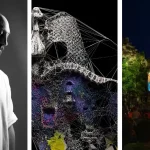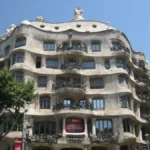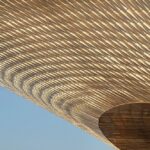São Jorge Castle, Lisbon Praça Nova, Building, Portugal Project, Photo, Design, Picture
São Jorge Castle Praça Nova : Lisbon Building
Portuguese Archaeological Site design by Carrilho da Graça, architect
28 Sep 2010
Design: Carrilho da Graça architect
Photos © FG + SG
São Jorge Castle Praça Nova, Lisbon
Carrilho da Graça distinguished with the Piranesi Prix de Rome 2010
The Project for the Musealization of the Archaeological Site of Praça Nova of São Jorge Castle, in Lisbon, realized by the architect João Luís Carrilho da Graça, was recently distinguished with Piranesi Prix de Rome 2010 International Prize.
The decision was taken by the jury chaired by Angelo Torricelli and composed by Francesco Dal Co, Amedeo Schiattarella, Luca Basso Peressut, Romolo Martemucci, Lucio Altarelli, Luigi Spinelli and Pier Federico Caliari. This Project was selected among a set of 18 nominations, with works of Rafael Moneo, Gigon & Guyer, Vasquez Consuegra, Paredes & Pedrosa. The architect Carrilho da Graça’s intervention was recognized for “proving and enormous clearness in the quality of the adopted solution, both in the physical relation between architecture and archaeology and in the relation between volumetric intervention and the landscape”.
The Piranesi Prix de Rome, through “Call Internazionale per architetture costruite – Progettare L’Archeologia”, has as main goal to select the architectural woks that explain at his foremost the principle of archaeological heritage valuation, as a solution for a contemporary project. The prize tries to highlight the emergent nature of a project research, based in the physical relation between archaeology and the contemporary landscape.
Palimpsest and Palindrome
(text published in Piranesi Prize application)
The hill occupied by São Jorge Castle is the site of the first known human settlement of Lisbon, a vantage point overlooking the Tagus estuary and its inland territory. The excavation of the Castle’s Praça Nova, begun in 1996, uncovered remnants of its successive periods of inhabitation, leaving the exposed archeological site open to an intervention of protection and musealization, addressing the themes of revelation and readability of the palimpsest that an excavation represents with a pragmatic approach aimed at clarifying the palindromic quality of interpretation of the site. The first action was its clear delimitation with a precise incision: a wall of Corten steel to contain the higher perimetrical surface.
The same precision was used in the inserted steps, landings and seating, setting them apart from the excavated walls. A hovering structure protects the existing mosaics of a XV Century Palace, its underside covered in a black mirror that allows the reflection of the pavements. The canopy for the protection of the XI Century Muslim domestic structures and its frescoes was an opportunity to reproduce its spatial experience. Conjectural, abstract and scenographic, the white walls float above the visible foundations, touching the ground on mere 6 points, while its covering filters the sunlight.
Underlying the whole site, the evidence of the Iron Age settlement is exposed and protected through a volume that invites the curiosity for the observation of its interior, leading the visitor around the excavated pit to the point where both the physical and time distance of the exhibited structures is made obvious. The palimpsest of the site History is thus decoded and the possibility of its palindromic time-space reading made clear through the experience construed by its material protection and musealization.
Project for the Musealization of the Archaeological Site of Praça Nova of São Jorge Castle, in Lisbon – Building Information
Author: João Luís Carrilho da Graça with João Gomes da Silva
Landscape architect / Teamwork: Francisco Freire, Vasco Melo, Pedro Abreu, Monica Ravazzolo, architects; Paulo Barreto, Vanda Neto, models
Foundations and Structure: Estudos Betar, José Pedro Venâncio and Paulo Mendonça
Water Installations: Estudos Betar, Marta Azevedo and Jorge Pinheiro
Electrical Installations: Ruben Sobral / Security Installations: GIPIC, Alexandre
Martins
Graphic Design: Henrique Cayatte, Mónica Lameiro and Pedro Gonçalves
Area: 3 500m2
Cost: 1.000.000€
Client: EGEAC (Empresa de Gestão de Equipamentos e Animação Cultural)
Date: 2008-10
Photographs: FG+SG, www.ultimasreportagens.com
João Luís Carrilho da Graça
João Luís Carrilho da Graça is an architect since 1977. In this same year he started his professional life. Lectured at the Faculty of Architecture of the Technical University of Lisbon between 1977 and 1992, at the Autonomous University since 2001 and at the Évora University since 2005.
Invited professor at the Navarra University Architecture School in 2007 and 2010. Invited for lectures in seminars and conferences at several international universities. “Chevalier des Arts et des Lettres”, 2010; “Pessoa Prize” 2008; Order for Merit of the Portuguese Republic, 1999; “FAD” Award,1999; “Secil” Prize, 1994; “International Art Critics Association” Prize, 1992.
jlcg press release, September 2010
jlcg arquitectos studio based in Lisboa, Portugal
São Jorge Castle Praça Nova, Lisbon images / information from Carrilho da Graça
Location: São Jorge Castle, Lisbon, Portugal
New Portuguese Architecture
Contemporary Portuguese Architecture
Lisbon Architecture Tours by e-architect
Portuguese Architecture – Selection
Paradinha Cabins, Porto, northern Portugal
Architects: SUMMARY
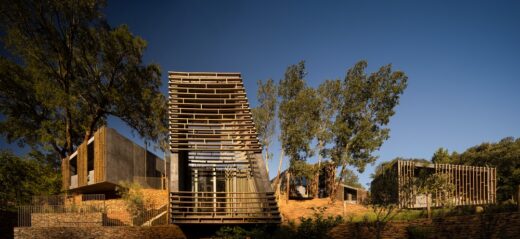
photo © Fernando Guerra_FG+SG
Paradinha Cabins, Arouca
MG Coudelaria, Minho Region, Northern Portugal
Architecture: Visioarq
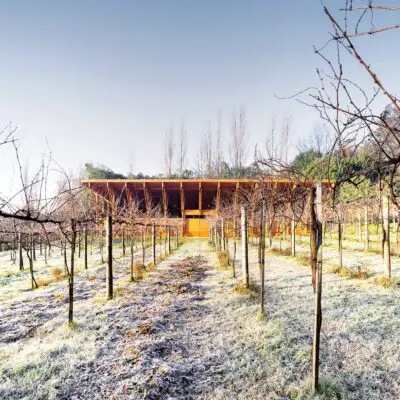
photo : Maria João Gala
MG Coudelaria, Minho, North Portugal
Castelo de Castelo Novo, Fundão
Luís Miguel Correia & Nelson Mota
Castelo de Castelo Novo
Sintra Natural History Museum
Sousa Santos Arquitectos
Sintra Natural History Museum
Comments / photos for the São Jorge Castle Praça Nova, Lisbon Portugal Architecture page welcome



